Latino Catholics are leaving the Church. Can we welcome them back?
Before its Easter Sunday service, Grace Walk Church in Phoenix was humming. Volunteers at the nondenominational church staffed the coffee bar, and ushers with warm smiles greeted early arrivals. In the parking lot, members wearing orange shirts directed traffic. The founding pastor, the Rev. Joe Calloway, wore jeans, a black hat and a white shirt with an American flag on the front and the word FREEDOM on the back.
The service began without a procession. Instead, it kicked off with live music and dancing led by Reggie Holmes, the worship director, and a pre-recorded video with a voiceover and images about the death and resurrection of Jesus. No one seemed to mind when people arrived late; and the service ended on time, just under an hour after it began.
Before his turn to speak, Pastor Calloway sat with the congregation, sipping coffee. Rather than refer to the day as Easter, he prefers to call it Resurrection Sunday, in an effort to disassociate the celebration from pagan fertility traditions. (The word Eastershares its etymology with the fertility goddess Eostre.) “What I want you to know is that God is real,” he said during his sermon.
A little over 20 years ago, alfalfa grew on the spot where the church now stands. Phoenix continues to be one of the fastest growing cities in the country, attracting residents from other states and from Latin America.
The congregation at Grace Walk is growing too. Among the new attendees are a significant number of former Catholics, many of whom are Latino, according to the Rev. Michael Penn, executive pastor of Grace Walk. This shift of Latino Catholics to Protestantism is not unique to Grace Walk. In April, the Pew Research Center released a study documenting the steady decline of Catholicism among U.S. Latinos. Approximately 43 percent of Latinos are Catholic, a chasmic drop from 67 percent in 2010.
Pastor Penn says he is interested not so much in attracting people away from Catholicism as in directing people toward Jesus.
Pastor Penn says he is interested not so much in attracting people away from Catholicism as in directing people toward Jesus. “Everything about our church is really trying to reach people,” he told America. “We’re not in competition with any other church. Our competition is everything else that people have that can take their time and attention away from living a life pursuing Christ.”
But this shift of Latinos away from Catholicism has many Catholic leaders and ministers concerned and wondering: Why are so many leaving the Catholic Church? Where are they going, and do any ever come back?
Searching for a Spiritual Home
Rogelio García is a former Catholic. On Resurrection Sunday at Grace Walk, he was one of the volunteers helping direct traffic in the parking lot. Growing up, Mr. García said, his family members would go to Mass on Sundays but otherwise would not observe the tenets of the Catholic faith.
“Thirty-seven years of my life, I was lost out there in the world,” Mr. García said. “I was a drug addict. I was a thief. In 2005, I was trying to get out of this world, but nobody would kill me.”
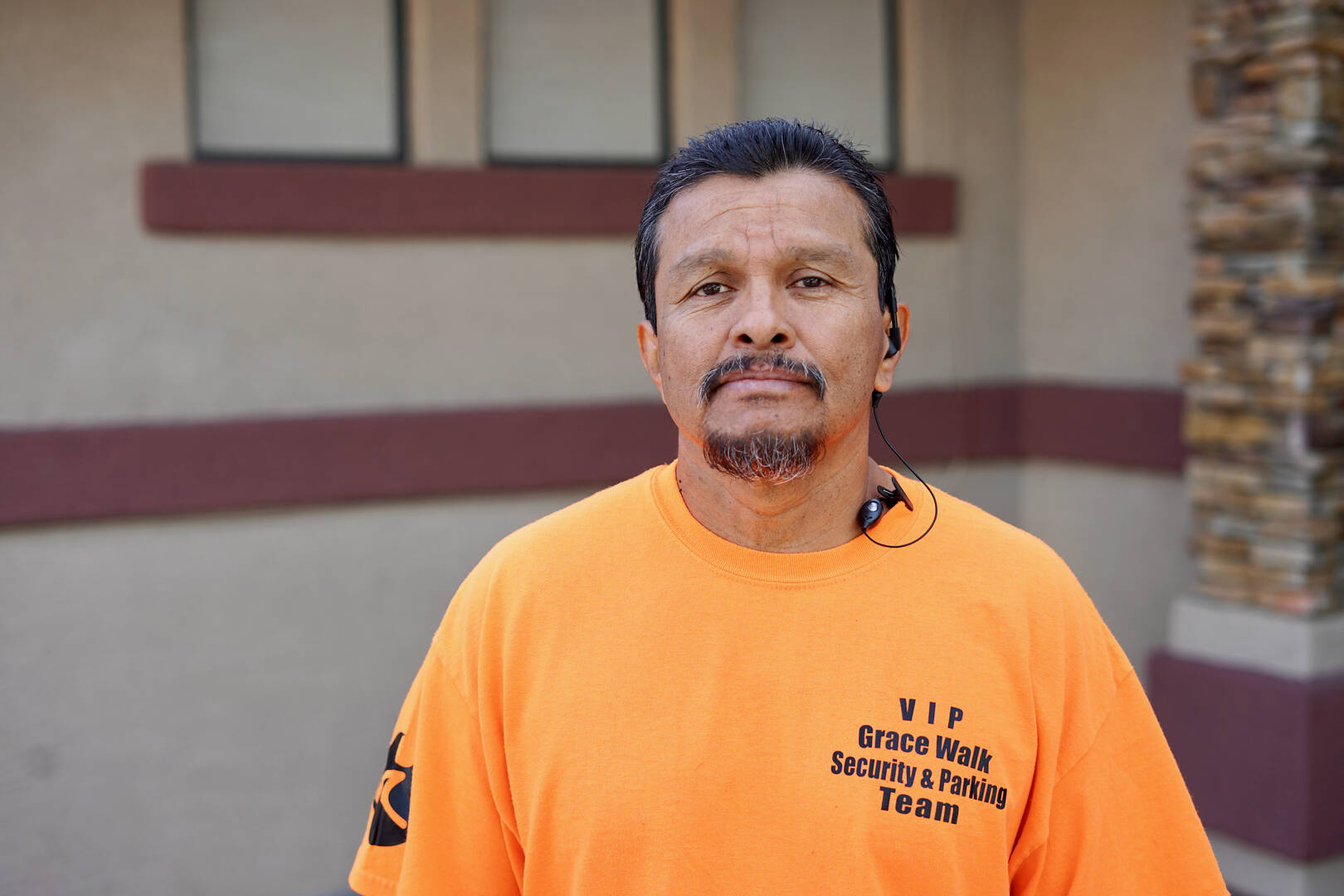
That is when he went to a Christian men’s home. They were there for him, he said, and he found Jesus. Today he is married, has a house and runs his own remodeling business. “[God] has done so much for me, and all I can do is show him how much I love him by seeking him every day,” Mr. García said.
“When I gave my life to the Lord, then everybody [in my family] gave their life to the church,” he said. “Because I was so bad, the things I did. But when they saw God change me, they were all, like, ‘Whoa! There is a God.’”
Unlike Catholics, over the last decade Protestants have maintained a relatively steady percentage of the Latino population—around 20 percent. Overall, evangelical Protestant groups have grown, according to Besheer Mohamed, a senior researcher at Pew. In fact, the recent study suggests evangelical Latinos are more engaged with their faith than Latino Catholics.
Pew found, for example, that 58 percent of evangelical Latinos attend religious services weekly, compared with the 22 percent of Latino Catholics who attend Sunday Mass. Further, evangelical Latinos are more likely than Latino Catholics to pray at least daily—72 percent versus 52 percent.
The reasons why Latinos leave the church are as complex as the community itself. Catholic leaders I interviewed suggested a number of causes, including cultural tensions, a lack of leadership opportunities and a shortage of Latino priests. But most agreed that the church should emphasize connections and deeper relationships going forward.
“We are looking at a church that needs to be a lot more missionary if it is to more fully engage Hispanic Catholics,” Mr. Aguilera-Titus said. “We are not only immigrants; we are missionaries.”
“I don’t think that young [Hispanics] are leaving because the Catholic Church believes this or that or the other,” said Alejandro Aguilera-Titus, assistant director of Hispanic affairs for the U.S. Conference of Catholic Bishops. “I think it’s a matter of relationality. ‘Do I feel at home in the parish? Do I have a sense of belonging? Am I important to the church?’”
The number of Catholics in Latin America has also decreased, so immigrants from that region are less likely to be Catholic than in years past.
The V Encuentro, a multiyear process organized by the U.S. bishops to learn the needs of the Latino community, identified engaging the children of immigrants as a top priority, Mr. Aguilera-Titus said. The bishops approved a national 10-year plan at their June meeting that seeks to better engage the Latino population through youth, young adults and families.
Actively reaching out is particularly important, according to Mr. Aguilera-Titus, who said that many U.S. Latino Catholics have been influenced by proselytizing from Protestant churches that are critical of the Catholic Church. “That has done damage for at least five decades,” he said.
In the United States, church leaders have established Hispanic ministry in more than 4,500 parishes, Mr. Aguilera-Titus said. This kind of ministry empowers Latino Catholics to “resist” proselytizing and, he believes, helps bring people back to the church. Catholic charismatic groups are particularly effective at evangelizing, he said.
“We are looking at a church that needs to be a lot more missionary if it is to more fully engage Hispanic Catholics,” Mr. Aguilera-Titus said. “We are not only immigrants; we are missionaries. We are injecting into the Catholic Church in the United States new vitality and youth and gifts, such as our faith in God and our sense of family, our popular religiosity and love for lay ecclesial movements.”
Armando Ruiz, who leads the Guadalupe Project in Phoenix, is trying to do the same. His ministry offers formation classes in homes to make the faith more accessible. The classes focus on the Bible, Mass and Mary. “Small groups—small enough so that it’s like you’re having coffee,” Mr. Ruiz said. The Guadalupe Project wants to help Latino parents teach their kids the Bible, because these families are critical for the Catholic Church.
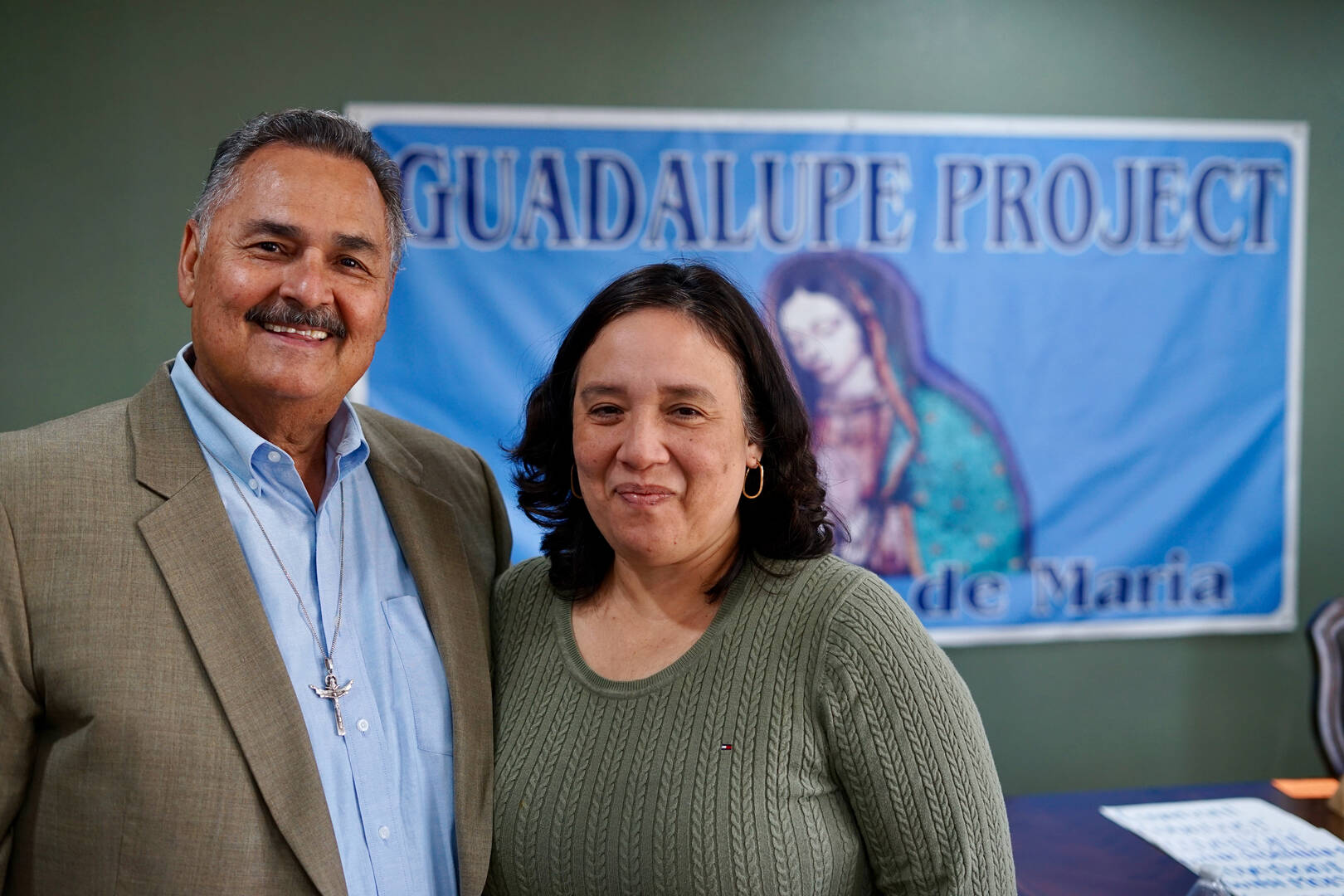
Mr. Ruiz has a family member who left the Catholic Church for a Protestant denomination but later returned. He noted that Latinos often find more opportunities for leadership in Protestant communities. “We don’t nurture the leadership that’s here,” Mr. Ruiz said of the Catholic Church. “Once [Latino Catholics] leave the Catholic Church, they become pastors. We [Catholics] tend to lack the zeal for evangelization,” he said, adding that the Protestant message often is: “Listen, brother. Go and get more brothers!”
Access to Catholic education is another issue Mr. Ruiz mentioned. In his area of South Phoenix, there are 22,000 children attending school, he said, but the local Catholic school has an attendance of 200. In general, Latinos are underrepresented in Catholic education, which means that the Catholic Church loses opportunities for faith formation at a young age.
All Are Welcome?
The shortage of priests in general presents yet another obstacle to engaging Latino Catholics, and a lack of Latino priests in some places can be particularly challenging.
“Latino priests are overwhelmed,” according to Mr. Ruiz. “They go out to bless houses, cars—they even go to birthdays. It gets busy!”
Priests are not always the answer, though, according to Eliseo Espinoza, a former Catholic originally from Agua Prieta, in the Mexican state of Sonora, but raised in Antioch, Calif. He says sometimes they are part of the problem.
“Sometimes I go back and I think, ‘Why did I completely get out of Catholicism?’” he told me. “It was a lot of little things that added up. But if I had to say one thing, it would be the rigidness and lack of acceptance.”
Mr. Espinoza was baptized Catholic and his family would go to church regularly early in his life. His mother prayed the rosary daily. Then, for reasons still unclear to Mr. Espinoza, his father stopped going to church. It was hard to continue going because his mother did not drive. “He wouldn’t even drive us to church,” he said.
Eventually, an apostolic church with upbeat music drew his family in. Mr. Espinoza liked the friendly, community-oriented events, including dinners and weekend picnics in the park, but was unsure about speaking in tongues. “That used to freak me out when I was a kid,” he laughed.
“To be a Latino Catholic is countercultural not only to American culture, but even American Catholicism,” Milton Javier Bruno said, referring to popular traditions and the faith handed down through family and community.
As an adult, Mr. Espinoza and his wife, Veronica, decided they would raise their children Catholic. For many years, he attended a parish in South Phoenix, went to Bible study and attended meetings of the Knights of Columbus.
“They had stuff that was fulfilling my needs. I was all for it, all excited,” he said. “Then we had a change of leadership.”
The former pastor fell ill, and his replacement was very strict. “He started telling ladies how they needed to dress for Mass,” Mr. Espinoza said. The new pastor ended the Bible study, and Mr. Espinoza found himself feeling unqualified or unworthy to participate in certain activities.
The pastor also scolded the congregation for only showing up on Christmas and Easter, Mr. Espinoza said. He described the pastor as an authoritarian figure who was not open to questions. The new priest emphasized the Tridentine Mass and wore more traditional vestments, like a maniple, when celebrating Mass.
“That completely changed what I was getting out of it. All these rules, and all I wanted to do was learn about God, right?” Mr. Espinoza said. “I get it now, but at that moment in my life, I didn’t need to be lectured. I needed to be hugged.”
The excitement he once felt about bringing his children to Mass did not return. And like his father before him, he started telling his wife to go without him. “But something was always telling me, ‘You need to get back to something,’” Mr. Espinoza said. “Now I know I was being called.”
After driving by Grace Walk dozens of times, he and his wife decided to give it a try. They were immediately taken with Pastor Calloway and his wife, Pastor Tammy. “There was something about them. They just looked so normal. They looked like me. So we decided to come,” he said. “I came in shorts. I wanted to see if they looked down on me, right? And nah, they just welcomed me.”
Latinos simply do not always feel welcomed in Catholic churches, according to Milton Javier Bravo, the vice president of mission, values and inclusion at Edgewood College in Madison, Wis. “To be a Latino Catholic is countercultural not only to American culture, but even American Catholicism,” he said, referring to popular traditions and the faith handed down through family and community. “In order to be accepted, you almost have to renounce your culture.”
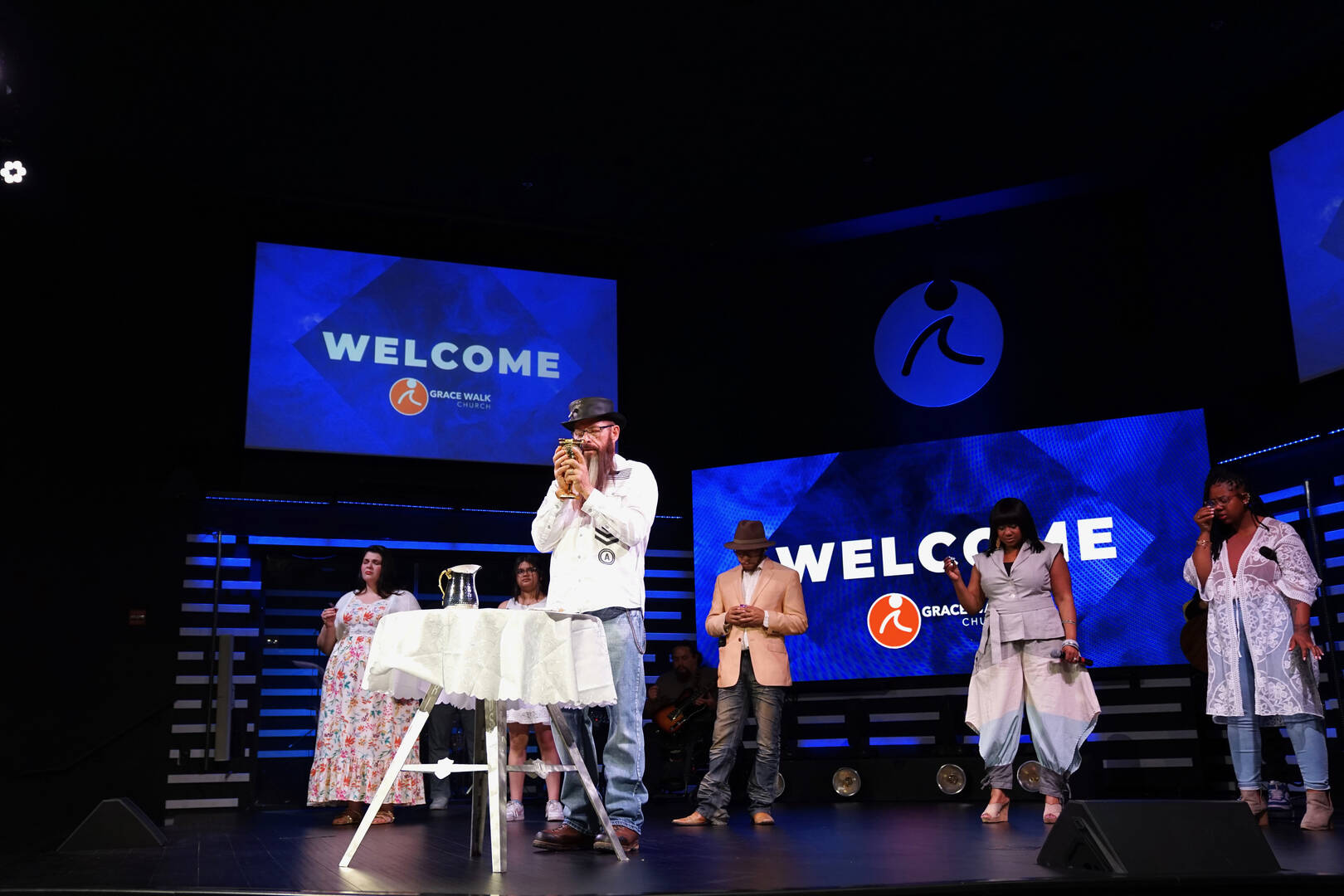
For many Latino Catholics, the deepest connections to their faith communities more often occur outside of Mass, Mr. Bravo said. These practices are more about understanding the interconnectedness of individuals within a community and the abiding love of God and neighbor, he said. Further, many value social justice work as a way of reflecting the values of these celebrations. This type of work also engages Gen Z and Gen Alpha Catholics, Mr. Bravo said.
“An experience of faith is first and foremost a relationship,” he said. “That requires encounter, a fostering of conversation, setting the table for all voices to share their experiences. You can’t do that in an hour on Sundays. And once you start listening, you can’t be but compelled to act in a different way.”
The Disaffiliated Masses
While the percentage of Latinos who are Protestant remains relatively steady, Pew reports the biggest change is among the religiously unaffiliated. Disaffiliated Latinos now make up 30 percent of all Latinos in the United States, triple the number from 12 years ago. The religiously unaffiliated include about half of Latino adults under 30. By contrast, only 20 percent of Latinos over 65 are unaffiliated.
Those I interviewed pointed to a number of potential causes. Some of the unaffiliated have parents who are not religious, so they were never introduced to a particular faith. Others had a bad experience with organized religion and chose to no longer practice. Still others say they are simply not interested.
Mark Cabrera started feeling unsettled in the Catholic Church as a teenager. He had been raised Catholic by his Mexican family in Texas, but he felt his confirmation program was not geared toward Latinos.
“I didn’t really feel connected to anyone,” he said. “After high school, I guess I sort of stopped going.... As Latinos, it’s sort of, ‘O.K., I go to church every Sunday because my parents are going.’ It’s not because you want to. It’s just an obligation.”
He went away for college but did not make many Catholic friends there. “Making white friends that were Catholic was weird to me,” Mr. Cabrera said. “I’m trying to find people who are similar to me, and I wasn’t finding that in the Latinos who were there.”
Disaffiliated Latinos now make up 30 percent of all Latinos in the United States, triple the number from 12 years ago.
It is a little hard for him to name a precise reason other than a general indifference toward the faith. “I’m not really into it. If someone asked me, I guess I would say I’m Catholic...or at least I still believe there’s something after the fact, after we die,” he said. The Catholic Church’s position on some issues, like same-sex marriage and abortion, are also obstacles for Mr. Cabrera.
Mary Rivas was also turned off by some of the teachings emphasized in her Catholic community in Maryland. Ms. Rivas is the oldest of four children and said she is the only one of her siblings who does not practice her faith by going to church every Sunday. “I make an effort to have a more personal relationship with God,” she said. “I don’t find that I can have a relationship with him through something as specific as a religion.”
She stopped going to church five years ago. She had suffered physically and mentally during her second pregnancy and after her child was born. Because of her mental state, she checked into a psychiatric hospital.
“What was proposed to me was simply, I wasn’t praying enough. I wasn’t going to church enough. I wasn’t being a good enough wife because I didn’t want more kids,” Ms. Rivas said, summarizing the advice she received from some fellow Catholics. Members of her community advised her and her husband to practice Natural Family Planning, a church-approved method of spacing children. That way, they told her, she could still receive the Eucharist.
“N.F.P. is not a 100 percent guarantee, and I found myself pregnant with my third baby,” Ms. Rivas said. “My doctor said, ‘Enough. You can’t keep putting yourself through all of this mental and physical stress for the sake of someone telling you that you are going to go to hell otherwise.’”
She wound up in the psychiatric hospital again. “I wanted nine children, but my body said otherwise,” she said. Ms. Rivas chose to start taking hormonal birth control, but she said the women in her community judged her for it.
“It really broke my heart because, you know, we preach so much about people being individuals created in God’s image, and everybody is different,” she said. “The plants and the birds and everything are unique. And yet women are only given one option for their reproductive health. But not everybody’s bodies are able to just work on N.F.P.”
“The prosperity that second- and third-generation immigrants are able to attain makes them feel like they don’t need their faith,” said Mr. Pereyra.
Ms. Rivas has two daughters, and she began to think of how they might be treated if they faced similar pregnancies. She was directed by other Catholics to speak with women who did not have tough pregnancies, and then to speak with priests.
“As wise as many priests are, their worldview and lived experience is so different from a woman’s, so different from a wife, so different from a mother,” Ms. Rivas said. “And they are only giving advice based on what they’re taught, not their own life experience of being a woman.”
The Catholic Future Is Latino
According to Pew, Hispanics accounted for 51 percent of the growth in the U.S. population from 2010 to 2020. (And most of that growth is not from immigration: Newborns are responsible for most of that growth, and 80 percent of Latinos in the United States are citizens.) Given the demographics, it is critical to make space for Latino faith and culture to thrive.
It is also critical to understand generational differences in Latino cultures, especially when it comes to immigrant populations, said Cristofer Pereyra, chief executive officer of the Tepeyac Leadership Initiative, a nonprofit organization that helps lay Catholics become civic leaders. First-generation immigrants arrive and, seeing the financial opportunities the United States has to offer, often feel like they need to catch up.
“The prosperity that second- and third-generation immigrants are able to attain makes them feel like they don’t need their faith,” said Mr. Pereyra. “Let’s be honest, when we talk to God, most of the time is when we need him. When you grow up poor in Latin American countries, you need God all the time. Suffering is a constant reminder.”
He believes that bringing people back to the faith is as simple as getting back to basics, including confession, Holy Hours and perpetual adoration. “We don’t have to reinvent the faith, we just have to be more Catholic,” he said.
Despite the fact that the Catholic Church is attracting a smaller proportion of the Latino population, the proportion of the Catholic Church that is Latino continues to grow. Church leaders and ministries must account for the fact that the Catholic Church is becoming more Latino, according to Deacon Charlie Echeverry of the Archdiocese of Los Angeles. He is the founder of the Black/Brown Collective, which focuses on emerging platforms and audiences. He noted that 42 percent of the Catholic Church in the United States is Hispanic, and Latinos account for 62 percent of Catholics under 18.
The Catholic Church must also consider the role language plays in connection to one’s faith, Deacon Echeverry said.
Given these demographics, the Catholic Church must also consider the role language plays in connection to one’s faith, Deacon Echeverry said. “You’ve got guys who are second, third, fourth generation Hispanic,” he said of the numbers. “A lot of them don’t speak Spanish. But their liturgical experience is Spanish because they’re brought [to Mass] by their parents or aunts and grandmothers. They don’t know the Our Father in English. So when you put them in an English Mass, they feel disconnected.”
But trying to offer access to worship—bulletins, websites, Masses—in multiple languages often has led to the dynamic of having two parishes in one church, one that speaks English and one that speaks Spanish. A similar phenomenon happens with the formation of deacons—through programs in either English or Spanish. But Deacon Echeverry said the diaconate should have everyone together, as is the case with priest formation in seminaries.
“They’ve got guys from Vietnam, from Nigeria, from the U.S., and they’re all being formed in one language. [In the diaconate] we had different syllabuses, different facilitators, different events and experiences,” he said. “We should focus on the person. We should focus on accompaniment.”
The global synod on synodality has been an opportunity to do just that, according to Ignacio Rodriguez, the associate director of Ethnic Ministries for the Diocese of Phoenix. Listening enables those who work and volunteer for the church to better understand underlying issues that impede participation.
“That’ll help us know how to evangelize, how to make encounters, how to make our parishes more welcoming and help those people who aren’t attending Mass see the beauty of what the Catholic Church offers,” he said. “Because it’s not all just rules and regulations. There’s a personal encounter with Jesus Christ. And that should always be the center of any type of program or evangelization effort, regardless if the person is 100 years old or a newly baptized baby.”
Mr. Rodriguez, who is the president of the National Catholic Association of Diocesan Directors of Hispanic Ministry, said many of those who leave the church do so because they are unhappy with their parish community, are unhappy with a priest who always preaches on certain topics, or are individuals who have lost confidence in organized religion. There is still a lot of healing to be done, for example, in the wake of the sexual abuse crisis.
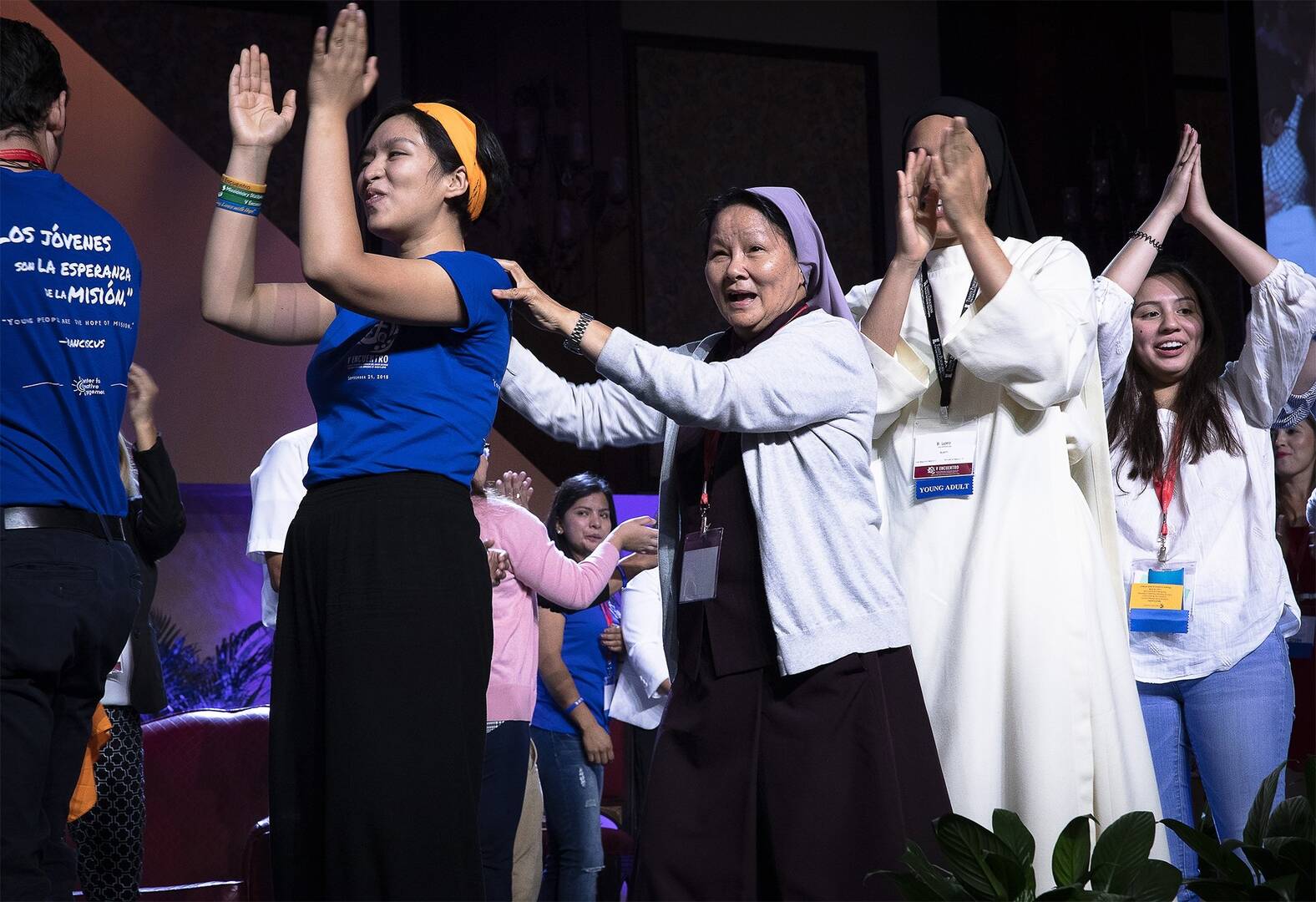
“For the church, there’s always hope. There’s hope that whoever has left the church will at some point want to come home,” Mr. Rodriguez said. “So it’s up to us to find a way to make that happen for them. Because we don’t want that to happen [only] on their deathbed. We want them to have an encounter with Jesus Christ, and an encounter with each other.”
Ingrid Sáenz de Torres knows firsthand that a return to the Catholic Church is possible. She grew up in Guatemala and said her mother was Catholic in name only. She learned about the Catholic faith from her grandmother. Pentecostal groups approached her as a young person and she remembers standing by the door of their church to listen to the music.
“I went home and told my mother and she scolded me. ‘If you’re going to go to church, you need to go to a Catholic church!’” Ms. Sáenz said. “But she would never take me.”
When she moved to the United States, she met the man who would eventually become her husband, though some of their children were born before the couple married. At that point, Ms. Sáenz started bringing her children to Mass and decided to become a parishioner.
The religious sisters at the parish asked if she was married.
“No, he doesn’t want to marry,” she told them, because it was true at the time. “What am I going to do?”
“Well, then you can’t be a parishioner,” she was told. “But bring him and we’ll talk to him.”
At that point, though, she stopped going to Mass.
Not long after, Jehovah’s Witnesses came to their house. Her husband was intrigued because they promised to answer his numerous doubts. True to their word, the Jehovah’s Witnesses came back to their home once a week to give them classes for more than a year. Then the couple went to the Jehovah’s Witnesses’ meeting place, which they refer to as a Kingdom Hall.
“I was very curious, so I asked a lot of questions,” Ms. Sáenz said. The group would read from The Watchtower, the Jehovah’s Witness magazine. But something did not sit right with her. She went home and compared Bible verses in the different Spanish translations she had: the Jehovah’s Witness, Protestant and Catholic. The inconsistency bothered her.
Eventually both she and her husband lost interest and tried an evangelical church. Ms. Sáenz liked the preaching and music but was less comfortable with some of the charismatic elements.
At one point, a Catholic couple stopped by their home expressing enthusiasm about their parish performance of “Las Pastorelas,” an Advent play that recounts the story of the shepherds who greeted the Christ Child in Bethlehem.
“But did they bother to invite us to join them? No! And we needed that little push,” she laughed. “The thing about other churches is that they invite you and then they actually come by and get you. In the Catholic Church, no one invites you.”
But eventually, someone did invite them. Her nephew Manuel Torres Caballero asked them to come by for their Catholic prayer group—which she said felt almost like rejoining an evangelical church. And that was it. “That’s when we came back to [Catholic] church,” she said. “I’m here now and I’m not leaving.”

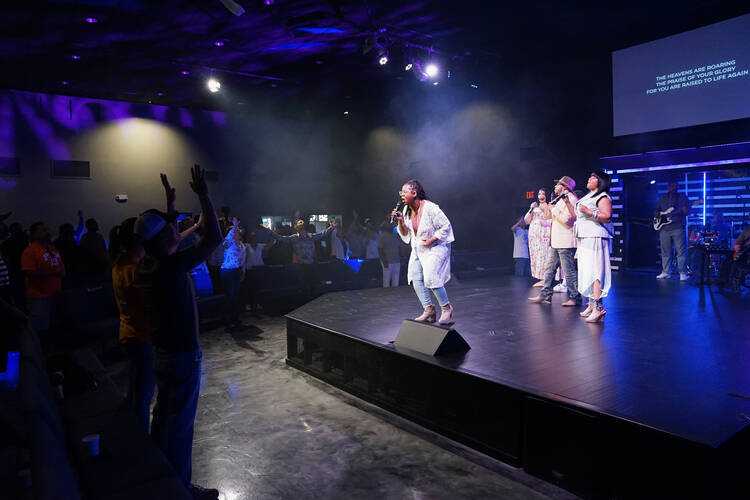



No comments:
Post a Comment